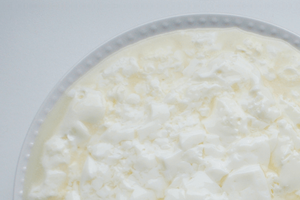You’ve got egg on your face. I had a few run-ins with eggnog this holiday season. I’ve never been able to stomach the stuff so I again missed out on whatever it’s supposed to do. It sat there, I looked at it, it looked at me, and so on. Eggnog reminded me of clabbernong and – well, here we go.
First, Colleen Graham discussed eggnog's history earlier this year in an article on The Spruce Eats:
One story claims that eggnog derives from "nog," an Old English word for strong beer. There's also the possibility that it derived from "noggin," a word for a small cup used in the 16th century. Another version attributes the name to American colonists who referred to thick drinks as "grogs" and eggnog as "egg-and-grog." By the time it appeared in print, the words were mashed together to create "eggnog" (sometimes "egg nogg" or "egg-nog").
Anyway, clabber is a type of soured milk. It is
produced by allowing unpasteurized milk to turn sour, or ferment, at a specific
humidity and temperature. Over time, the milk thickens or curdles into a
yogurt-like consistency with a strong, sour flavor. If you drink it do you call
it clabbernog? Was Bellairs envisioning some sort of silly-sounding yet
foul-tasting beverage when constructing the surname of the Capharnaum County
residents, Elihu and Jedediah Clabbernong? The two were mentioned in The House
with a Clock in its Walls (p. 100) and The Beast under the Wizard’s Bridge (p.
10) and it's their family which is connected to the old iron bridge appearing in both books.
If not, nong appears to be defined as "idiot" in some cultures. Maybe I’m
“nong” for even coming up with this – I don’t know. That’s enough Bellairsian
etymology for this week.


No comments:
Post a Comment